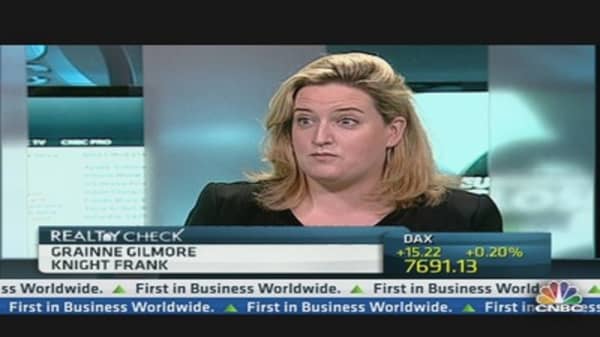London's property is losing its attraction for investors as they start to venture out of 'safe havens' and worry that the city's prices look high, given a slowing British economy.
A reputation as a safe place to park money during global market turmoil helped drive central London office prices up 52 percent between mid-2009 and the end of 2012. Prices in the smaller luxury residential market grew at a similar pace.
As investors feel calmer about the world in general, they are looking more closely at London property holdings.
"I cannot help but conclude that London is in bubble territory," said Ben Habib, Chief Executive of First Property Group, which owns British and Polish real estate. "The returns available are very low and capital values vulnerable to a shock."
Commercial property deals reached nearly 21 billion pounds (US$33 billion) last year, according to research group Real Capital Analytics. That was double the amount for Paris and four times Berlin.
Over 64 percent of money coming into the market was from abroad - up from 61 percent in 2011 and 55 percent in 2010.
But fears of a euro zone breakup, a slew of U.S. tax rises and spending cuts or sharply slowing Chinese growth have diminished - removing factors that had driven the flow of money.
Meanwhile, concerns over Britain itself have grown.
The economy shrank in the last quarter of 2012, Britain's AAA credit rating looks in danger and the pound is at a 6-month low against the dollar - in part because of outflows from government bonds that had themselves been seen as a safe haven.
A weakening pound "may start the unwinding of the great wall of money," said Jefferies real estate analyst Mike Prew. "A prime London asset denominated in a secondary currency loses much of its investment appeal."
Yields Under Scrutiny
Not all agree that London property has run out of steam, citing strong lettings in buildings outside top locations.
"If this is a recession, then not only is London doing rather well but imagine the impact of any economic and financial recovery," said Investec property analyst Alan Carter.
When the investor focus turns to yield rather than preserving capital, skeptics say it is harder to make the case for London property.
Yields for some Mayfair properties are under four percent. They are below three percent for the Rolex store under the One Hyde Park luxury flat scheme in Knightsbridge. That compares to a longer term trend of about five percent in the wider West End district.
"We don't believe there is good value in prime central London and are selling to reinvest elsewhere," said Richard Gwilliam, head of property research at PRUPIM, a real estate investment arm of British insurer Prudential that has about 15 billion pounds (US$24 billion) under management.




